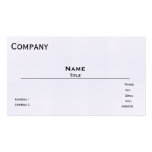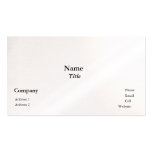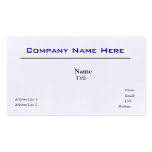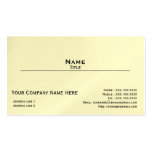Their data says that the average conversion rate of sites with content marketing is 2.9%, compared to the average conversion rate of sites without a content strategy, which is a paltry 0.5%. It is only natural to want to invest more time into content marketing after seeing these numbers.
What’s more, people don’t like traditional internet advertisements anymore, and to address this development, many businesses are turning to content marketing to advertise their products in a subtle, non-intrusive way.
How do I get started?
1. Do one thing and do it well – Your time and energy will be better spent if you focus on one form of content in the beginning. As Neil Patel says, “One type of content. One platform”. If you don’t know which form of content to start with, email marketing is a safe bet. Our friends over at Content Marketing Institute have found that 74% of the most successful B2C marketers use email as their primary way of distributing content. Other ways of content marketing include making YouTube videos, podcasts, creative blogs, eBooks etc. Pick a medium you’re comfortable with and get cracking.
2. Catch more attention with visuals – It’s common knowledge that human beings are visually oriented. If you aren’t very good at interacting with an audience through text, try your hand at making a video teaching series on YouTube or on a similar video streaming platform. A couple of other video streaming platforms are Udemy, Lynda, Podia, Kajabi and Pluralsight.
3. Tap into your existing customer base – This tip might seem obvious but a surprising number of businesses miss this. Sharing your customers’ stories tells new potential customers that other people like your product or service. It also has the added benefit of customers creating content for you. A great way to encourage customers to share their stories about your product is to give them an incentive to do so. Incentives could be anything from specialized privileges to discounts on their next purchase. You could also initiate an interesting competition rewarding the best reviews to ensure that people have fun while also talking about you.
4. Encourage product experimentation – If your product allows for it, organising a competition where users are encouraged to create product hacks or tips is great for market awareness. The hype these hacks create can make even people who may have no intention of using your product to buy it. Who knows? You might discover a use for your product that even you didn’t know about, which you can then spin to your advantage by marketing.
5. Share your stories – Along with having your customers share their stories, you can create content centered around your brand’s stories. Topics for your stories can be how you’ve built your company to what it is today, personal life stories, a turning point in your business, etc. Personal stories make your business more relatable to your customers. Stories about how you make your products are also great because they build trust with your customer through transparency.
6. Guest blogging is a thing – If you aren’t confident about creating your own content to a level you’d be satisfied with, feel free to contact a few guest bloggers. You will have to sift through a lot of bad writers but once that’s done you’ll be left with writers you’re comfortable with. You can either create a guest post page on your site or you can reach out to people who are well known in the field as better writers.
7. You don’t have to do it all alone – You can pay other people to create content for you. There are a few ways of going about it like talking to influential people on social media platforms to endorse your product. People on social media platforms like Instagram have people that ‘follow’ them because they trust their opinions and what they stand for. Look for ‘influencers’ with a following of more than 10,000 people. Depending on your budget, you can go anywhere from 10,000 to a few million followers. You can even hire writers or bloggers to write about your product. Do not make the mistake of hiring a cheaper writer, a 15$ writer will prepare an article that looks and feels like it’s worth 15$. Pony up some extra change, it’s worth it.
8. Do not forget why you are content marketing – You are creating content so that you can sell your product. Do not supply the content and forget about the marketing. Promoting your content is equally as important as creating content. Paid advertisements aren’t necessary, but they do a good job of getting the word out quicker. Do a little research and pick a promotional channel that your target audience follows.
How to manage content marketing without expending much cost or effort
As a marketing manager for a business, you’re responsibilities are endless, from assessing your brand’s dynamic position in the market to creating a marketing strategy to improve it and having that strategy executed. It’s tiresome to have the responsibility of overseeing daily content creation added to that rigorous routine. That’s why many successful marketing managers outsource or automate their content creation.
Agents for outsourced content creation
There are various agents to whom you can outsource content, each of whom function in slightly different ways. Again, each of these agents have their own advantages and disadvantages that you should consider when outsourcing content projects. Here’s a short summary of each type of agent and the process of working with them.
Managed content agencies
A managed content agency is basically any agency that has an account manager whom you can communicate requirements to and work with until completion of your project. The advantage of working with such an agency is that you are assured quality and on-time delivery, both of which are in question when you work with freelancers. Here are some agency examples and a quick note on their working style.
Godot Media – This content agency has a network of writers specialized in different industries and styles of writing. They assign an account manager for each client who is a dedicated touch point, which is great because you don’t have to manage multiple writers or parties. When you approach the agency or place an order, the whole process of ordering, selecting the right writer(s), and delivery is taken care of centrally.
Great Content – If you want content written in a different languages and want to work with a managed content service, Great Content gives you the option. This agency claims to have writers specialized in 32 languages, which is great for creating custom content for each demographic that you’re working with.
Brafton – This content agency focuses on strategy and distribution of content as much as it does on the creation of content. So they can be a bit expensive. If you don’t have a full-time marketer in your company or time for marketing tasks on your hands (but a reasonable budget), you can consider working with them, so your marketing strategy and tasks are taken care of.
Freelancing websites
Typically, freelancing websites work the same way. They’re both business and freelancer facing, and mediate between the two parties. They make it easier for you to find freelancers, but don’t necessarily manage and dictate terms until project completion. Most of them do, however, offer one layer of intervention through which you can reject work that isn’t to your satisfaction. A few examples of such websites are Upwork, Copify and Scripted.
Job sites and LinkedIn
You can also contact freelancers directly using Job sites and LinkedIn. The advantage of this effort is that you decrease costs, but the freelancers you find in this manner have to be managed solely by you. In the event that they don’t meet your expectations of quality or deadlines, you have to accept responsibility by yourself. Searching for freelancers individually is also a very time-consuming process. Even when you publish job postings on websites, you’re likely to get huge numbers of applicants who you will have to personally filter to find the right freelancer.
Tools for content marketing
Along with outsourcing to content agencies and freelancers, you can also get the most out of content by using content marketing tools like the ones below. The effect of content isn’t utilized unless you have marketed it to the right audience through the right marketing channels.
Canva
Any content on the internet is best served with attractive visuals. Unless you want to outsource graphic design, you require an easy way to create visuals everyday, multiple times. Using templates on Canva, you can quickly put together social media promotions for blog posts, quote covers, infographics and more.
Hashtagify
While sharing content is an important step, how you share that content is equally important. Which keywords do you use? Do you use hashtags? Do you attribute or @mention anybody? Using Hashtagify, you can assess the strength of different hashtags and identify the ones that are popular enough to use but not saturated by too much activity.
SumoMe
If you’re regularly publishing content on your blog, you need a way to have that content shared by the people who visit your website. If there’s no easy way for website visitors to share your content, they won’t. SumoMe is a social media share plugin that you can setup on your website to enable easy sharing for anybody who visits you.
Content marketing tips and tricks
1. Optimize your pages’ speed – It’s great if your website looks good from a UI (User Interface) perspective, but if your website loads slowly or doesn’t load at all you’re going to lose a lot of traffic.
2. Make old blog posts new again – Updating old posts is a great way to keep old content relevant without expending too much effort. Updating data refreshes your contents rankings on search engines.
3. The length of your content matters – Forget all you’ve heard about the average person’s attention span being shorter than that of a goldfish. Creating high quality and long-form content earns higher rankings, boosts organic traffic and boosts conversion.
4. Use Google AdWords – Finding relevant keywords to use in your content has never been easier with the advent of Google AdWords. Investing a few bucks in Google AdWords will pay huge dividends in the future.
5. The important buttons must be easily accessible – Important buttons like payment buttons and share buttons must be placed in ‘obvious’ places because these buttons are critical for your business to succeed. Many sites mess up by not putting share buttons on good, shareable pages.






hi.. also check out out website at https://www.makemepass.org/
ReplyDelete